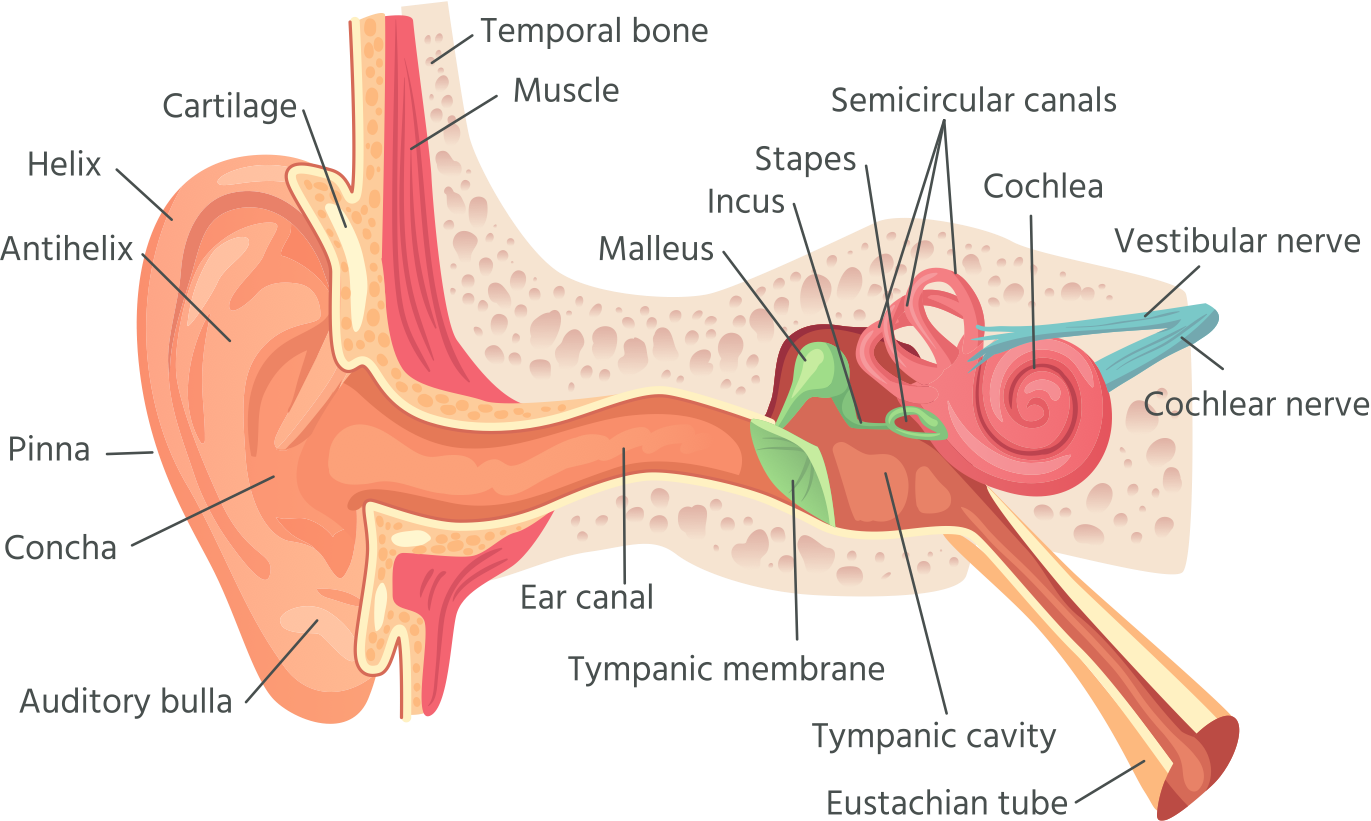The human ear is a marvel of natural engineering. Not only does it allow us to hear what is happening in the world around us, but it also enables us to stand, walk on two legs, and even juggle (well, for some of us). Ears never stop working; even when you are asleep, they are always on.
The ear is separated into three areas: the outer ear, the middle ear, and the inner ear.
The Outer Ear
The outer ear includes the external area, where we hang jewelry, and the ear canal. It is shaped to funnel sound into the middle ear for processing.
The tympanic membrane (also known as the eardrum) separates the outer ear from the middle ear. Sound travels as waves in the air, and the eardrum vibrates when it is struck by these sound waves. It transmits these vibrations in the air to vibrations in the middle ear.
The vibrations in the middle ear are detected by small bones called the malleus, incus, and stapes commonly referred to as the hammer, anvil, and stirrup. They transmit these signals to the fluids of the inner ear.
The Inner Ear
In the inner ear, the cochlea converts these signals into electrochemical impulses that are transmitted to the brain via the auditory nerve. The brain recognizes the signals coming from these nerves as “sound” and interprets them as it has been trained to since birth. Having two ears separated by a small distance allows the brain to triangulate on sounds and determine the direction from which they originate.
The inner ear also helps with balance. Within the inner ear, there is a Vestibular System, which is referred to as the balance organ. This can alter your balance because it works with the visual system (like the eyes and the muscles of the brain that allow vision reception) and stops items from becoming unfocused or blurred as the head moves. The Vestibular System also assists in, quite literally, maintaining a balanced head. It helps to keep awareness of positioning during movement like driving, riding a bike, or even walking.
The Middle Ear
The eustachian tube is a canal connecting the middle ear to the nasal cavity and the back of the throat. It acts as a pressure control for the middle ear, equalizing pressure in the air outside with the pressure inside the ear. Hearing can also be affected if the pressure on the exterior and interior of the eardrum are too different.
The eustachian tube is normally collapsed (closed) and will open when you chew, swallow, or yawn. If the pressure outside the body changes suddenly, such as during airplane travel, scuba diving, etc., you may experience what feels like a blockage in the ears as the air pressure trapped in the middle ear increases relative to the outside (decreasing) air pressure. Opening the eustachian tube allows pressure to equalize with the rest of the body.
Ears and their ability to help with not only hearing but balance and sight as well as a marvel of natural engineering. This fine-tuned machine within our bodies is important to many functions and it is vital to pay attention to the ear. If something seems off, it is always best to visit a specialist and get to the core of the problem.



